Autism communication strategies are essential for supporting individuals with autism in developing effective language and social interaction skills. These strategies often include visual aids, structured environments, and AAC devices, helping individuals navigate daily interactions and build meaningful relationships. By understanding and implementing these approaches, caregivers and educators can foster improved communication and overall well-being.
Understanding the Importance of Communication in Autism
Effective communication is vital for individuals with autism to navigate social interactions and express their needs. Challenges in communication can lead to feelings of isolation and frustration, emphasizing the need for tailored strategies. By addressing these challenges, individuals with autism can better connect with others, fostering emotional well-being and independence. Tailored communication strategies help individuals express preferences, emotions, and ideas, building stronger relationships and reducing anxiety. Understanding and adapting to their unique communication preferences is crucial for providing meaningful support and enhancing their quality of life.
Overview of Common Communication Challenges in Autism
Individuals with autism often face challenges in verbal and nonverbal communication, including difficulties with social cues, initiating conversations, and understanding tone or sarcasm. Some may experience delays in language development or rely on repetitive speech. Sensory sensitivities can also impact communication, as overwhelming environments may hinder effective interaction. Challenges may vary widely among individuals, with some experiencing significant barriers to expression while others may struggle with interpreting others’ emotions or intentions. Addressing these challenges requires personalized strategies to support effective communication and foster meaningful connections.

Visual Aids and Supportive Tools
Visual aids like pictures, schedules, and choice boards help individuals with autism understand routines and make decisions, reducing anxiety and improving communication effectively.
Using Picture Exchange Communication Systems (PECS)
Picture Exchange Communication Systems (PECS) enable individuals with autism to communicate by exchanging pictures for desired items or activities. This method reduces frustration and promotes independence, as it allows non-verbal individuals to initiate interactions. PECS starts with simple images and gradually introduces sentence construction. It is highly effective for those with limited verbal skills, fostering clear and purposeful communication. By breaking down communication into manageable steps, PECS empowers individuals to express their needs and wants effectively, enhancing their ability to engage with others and participate in daily activities confidently.
Implementing Visual Schedules for Routine and Structure
Visual schedules provide a clear, structured routine, helping individuals with autism understand and anticipate daily activities. Using images or written cues, these schedules reduce anxiety and transitions challenges. They can be tailored to individual needs, offering a predictable framework for tasks and events. Visual schedules also support independence by allowing individuals to track their progress and prepare mentally for changes. Implementing these tools fosters a sense of control and stability, making environments more conducive to effective communication and emotional well-being. They are particularly effective when combined with other strategies, such as choice boards, to create a comprehensive support system.
Creating Choice Boards for Decision-Making
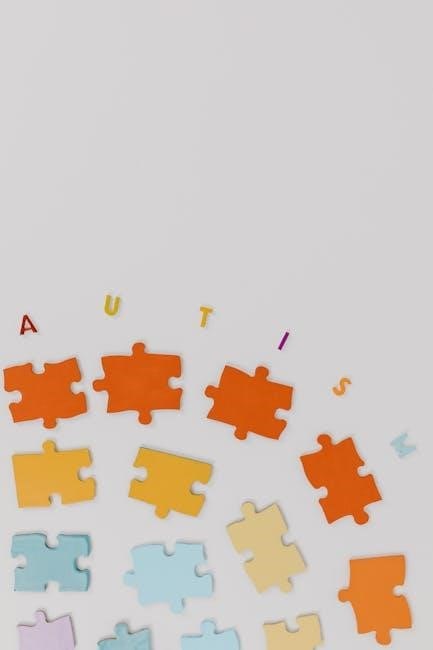
Choice boards are visual tools that empower individuals with autism to make decisions, fostering independence and reducing frustration. They present options through images or text, allowing individuals to communicate preferences effectively. For example, a choice board might offer meal options or activity choices, using clear visuals to aid understanding. Implementing choice boards enhances autonomy and self-determination, while also reducing anxiety associated with unexpected decisions. They can be customized to suit individual needs and preferences, making them a versatile and effective communication strategy in both home and educational settings. Regular use of choice boards promotes confidence and encourages active participation in daily activities.
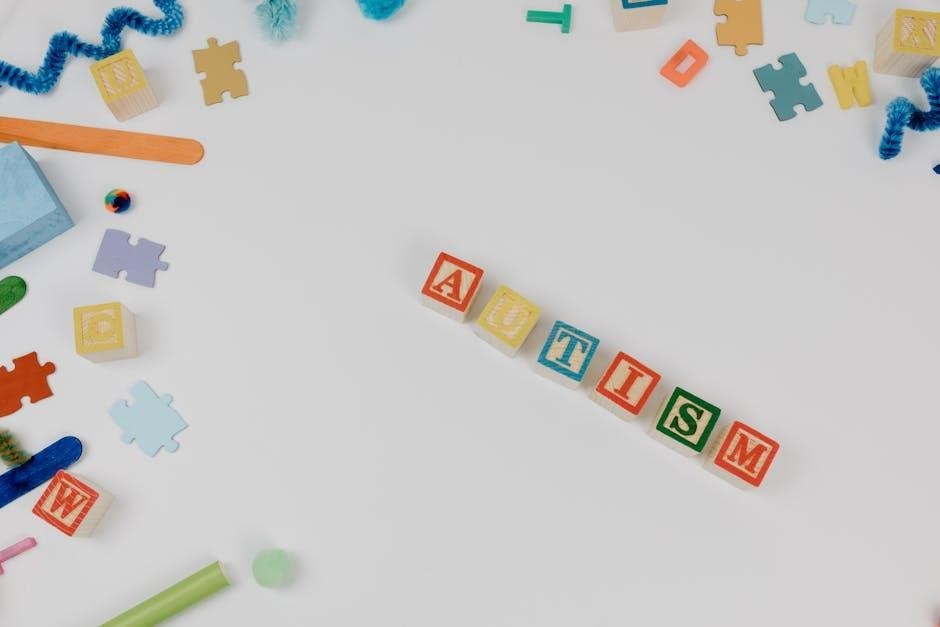
Structured Communication Environments
Structured communication environments involve designing sensory-friendly spaces and minimizing distractions to enhance focus and effective interaction for individuals with autism.
Designing Sensory-Friendly Spaces for Effective Communication
Designing sensory-friendly spaces involves creating environments that minimize sensory overload, enhancing focus and communication for individuals with autism. Use calming colors, soft lighting, and noise-reducing materials to create a soothing atmosphere. Incorporate visual supports like schedules and choice boards to provide clarity and structure. Ensure seating arrangements promote engagement while allowing personal space. Sensory-friendly spaces help reduce anxiety, making communication more accessible and effective. By tailoring the environment to individual needs, caregivers and educators can foster a supportive setting for social interaction and learning.
Minimizing Distractions to Enhance Focus
Minimizing distractions is crucial for improving communication in individuals with autism. Identify and reduce sensory triggers like loud noises or bright lights by creating calm, organized spaces. Use visual aids and clear structures to help maintain focus. Encourage whole-body listening techniques to enhance engagement during interactions. By limiting interruptions and providing a predictable environment, communication becomes more accessible and effective. These strategies help individuals with autism concentrate better, fostering clearer and more meaningful interactions in both learning and social settings.

Augmentative and Alternative Communication (AAC)
AAC involves using tools beyond speech, like pictures or devices, to support communication for individuals with autism. These methods are tailored to their unique needs and preferences.
AAC devices and apps are powerful tools designed to support individuals with autism in expressing their thoughts and needs. These tools range from simple picture-based systems to sophisticated text-to-speech apps. They allow users to communicate effectively by selecting symbols, words, or phrases, which are then converted into speech or text. Many AAC systems are customizable, enabling users to tailor communication to their unique preferences and situations. By providing an alternative to spoken language, AAC devices and apps empower individuals with autism to participate fully in conversations, fostering independence and confidence in their daily interactions.
Teaching Individuals to Use AAC Effectively
Teaching individuals with autism to use AAC devices and apps effectively involves a structured and patient approach. Start with simple, familiar vocabulary and gradually introduce more complex communication symbols. Use visual supports and role-playing to practice interactions in real-life scenarios. Consistency is key; ensure all caregivers and educators use the same system. Positive reinforcement and encouragement help build confidence. Regular practice sessions, tailored to the individual’s learning pace, are essential. Over time, with support and repetition, individuals can master AAC tools, enabling them to express their needs, thoughts, and emotions more independently and effectively in various social and educational settings.
Social Stories and Role-Playing
Social stories and role-playing are powerful tools to help individuals with autism understand social situations and behaviors. They provide clear guidelines and expectations, reducing anxiety and improving interactions.

Developing Social Stories for Specific Situations
Social stories are detailed narratives that guide individuals with autism through specific social scenarios. They clarify expectations and reduce anxiety by outlining appropriate behaviors and responses. These stories use simple, clear language and often include visual aids to enhance understanding. To be effective, social stories should be tailored to the individual’s needs and preferences. Involving the person in the creation process can increase their engagement and sense of ownership. By breaking down complex situations into manageable steps, social stories empower individuals to navigate challenging social interactions with greater confidence and independence.
Using Role-Playing to Practice Social Interactions
Role-playing is a powerful tool for helping individuals with autism practice social interactions in a safe and controlled environment. By simulating real-life scenarios, such as initiating conversations or responding to emotions, individuals can learn and rehearse appropriate reactions. Visual aids like flow charts or planning paths can complement role-playing, providing clear guidelines for behavior. This method allows individuals to explore different social outcomes and develop problem-solving skills. Role-playing also fosters collaboration between caregivers and individuals, helping them understand each other’s perspectives. Consistent practice through role-playing can improve social understanding and confidence, making interactions more meaningful and successful.
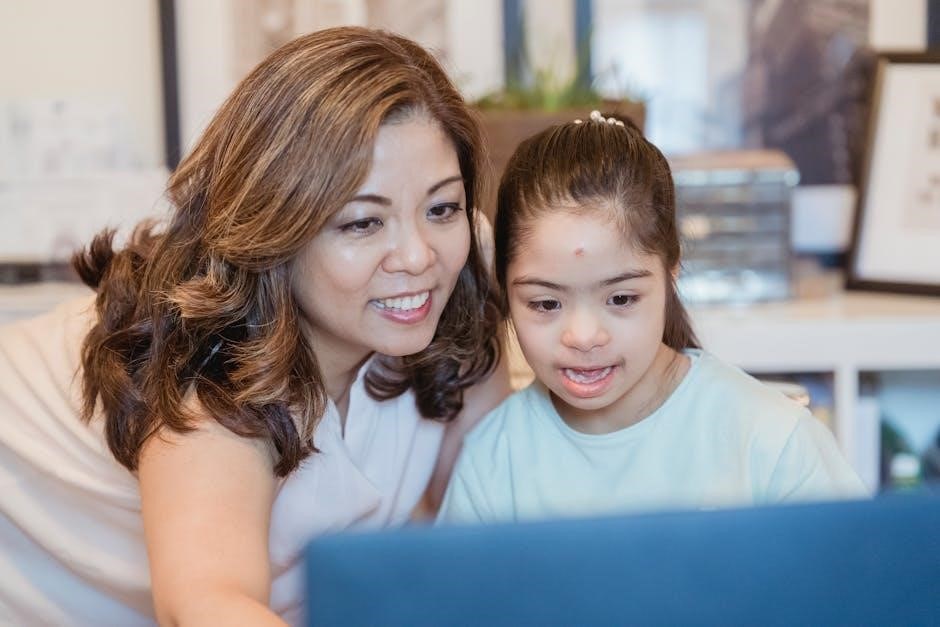
Strategies for Teachers and Caregivers
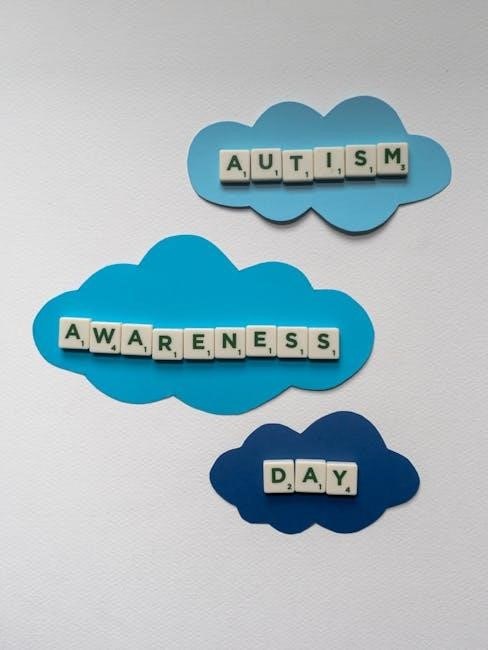
Strategies for teachers and caregivers include providing toolkits, resources, and interventions to support communication and daily life, fostering collaboration between parents and educators.
Classroom Interventions for Communication
Classroom interventions for communication involve tailored strategies to support students with autism, such as using visual aids, structured routines, and sensory-friendly environments. Teachers can implement tools like PECS, choice boards, and social stories to enhance engagement and understanding. Incorporating augmentative and alternative communication (AAC) devices or apps can also bridge language gaps. Additionally, minimizing distractions and providing clear, concise instructions help students focus. Collaboration with parents and specialists ensures consistent approaches, fostering a supportive learning environment that promotes social and academic growth for autistic students.
Collaborative Approaches Between Parents and Educators
Collaborative approaches between parents and educators are crucial for effective communication strategies in autism. Sharing insights and strategies ensures consistency in supporting the child’s needs. Regular communication through meetings, reports, and feedback fosters a unified approach. Parents can provide valuable information about their child’s preferences and behaviors, while educators offer expertise in structured learning environments. By working together, they can adapt strategies like visual aids, AAC devices, and social stories to create a cohesive support system. This teamwork enhances the child’s ability to thrive both at home and in the classroom, ensuring their communication and social skills develop effectively.
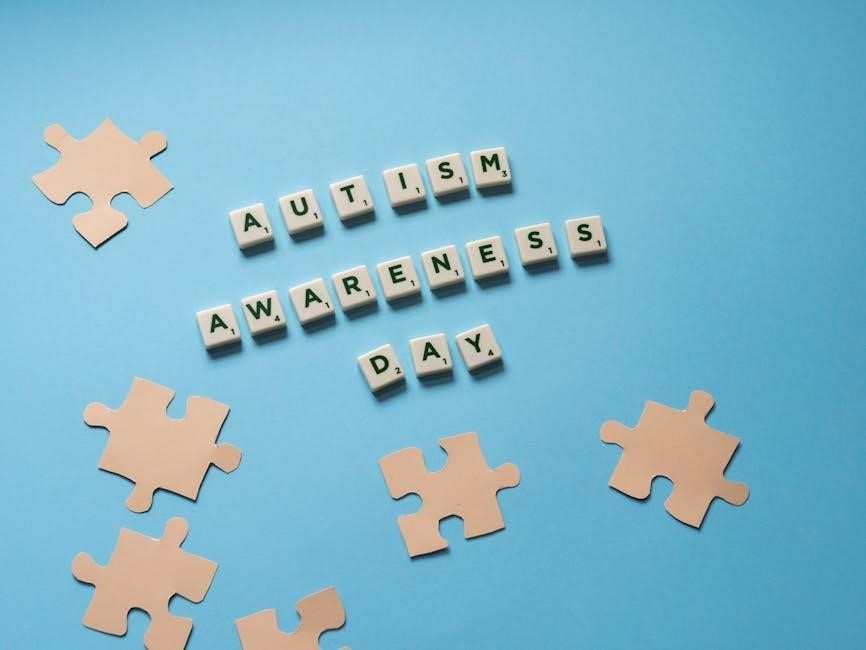
Resources and References
Explore recommended guides, practical toolkits, and online workshops for autism communication strategies. These resources provide comprehensive support for caregivers, educators, and individuals with autism.
Recommended Reading and Guides for Communication Strategies
Discover essential guides and resources for autism communication strategies, such as the Emotions and Autism Worksheet, the 100 Day Kit for grandparents, and comprehensive handbooks for teachers. These tools offer practical advice, visual aids, and structured approaches to support individuals with autism. They provide strategies for everyday life, employment challenges, and social interactions, helping caregivers and educators create nurturing environments. Explore nuanced explorations of autism, including insights into masking and communication preferences. These resources empower families and professionals to foster effective communication and independence, ensuring a holistic approach to supporting autistic individuals.
Online Tools and Workshops for Continuous Learning
Enhance your understanding of autism communication strategies through online tools and workshops. Websites like York St. John University offer downloadable resources such as the Emotions and Autism Worksheet. Explore webinars and interactive platforms that provide practical tips for supporting autistic individuals. Guides like the 100 Day Kit and handbooks for adults with autism are accessible online, offering insights into daily challenges and solutions. These tools equip educators and caregivers with the latest strategies to foster effective communication, social interactions, and emotional well-being. Continuous learning through these resources ensures a comprehensive approach to supporting individuals with autism spectrum disorder.